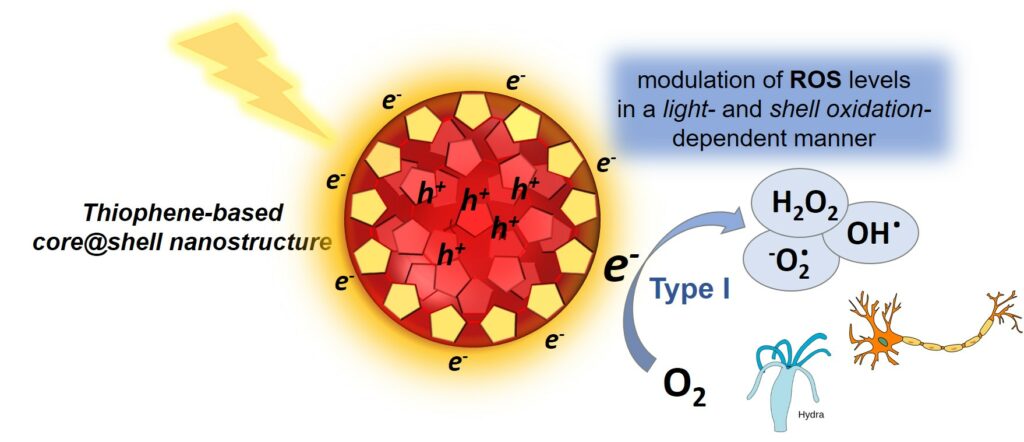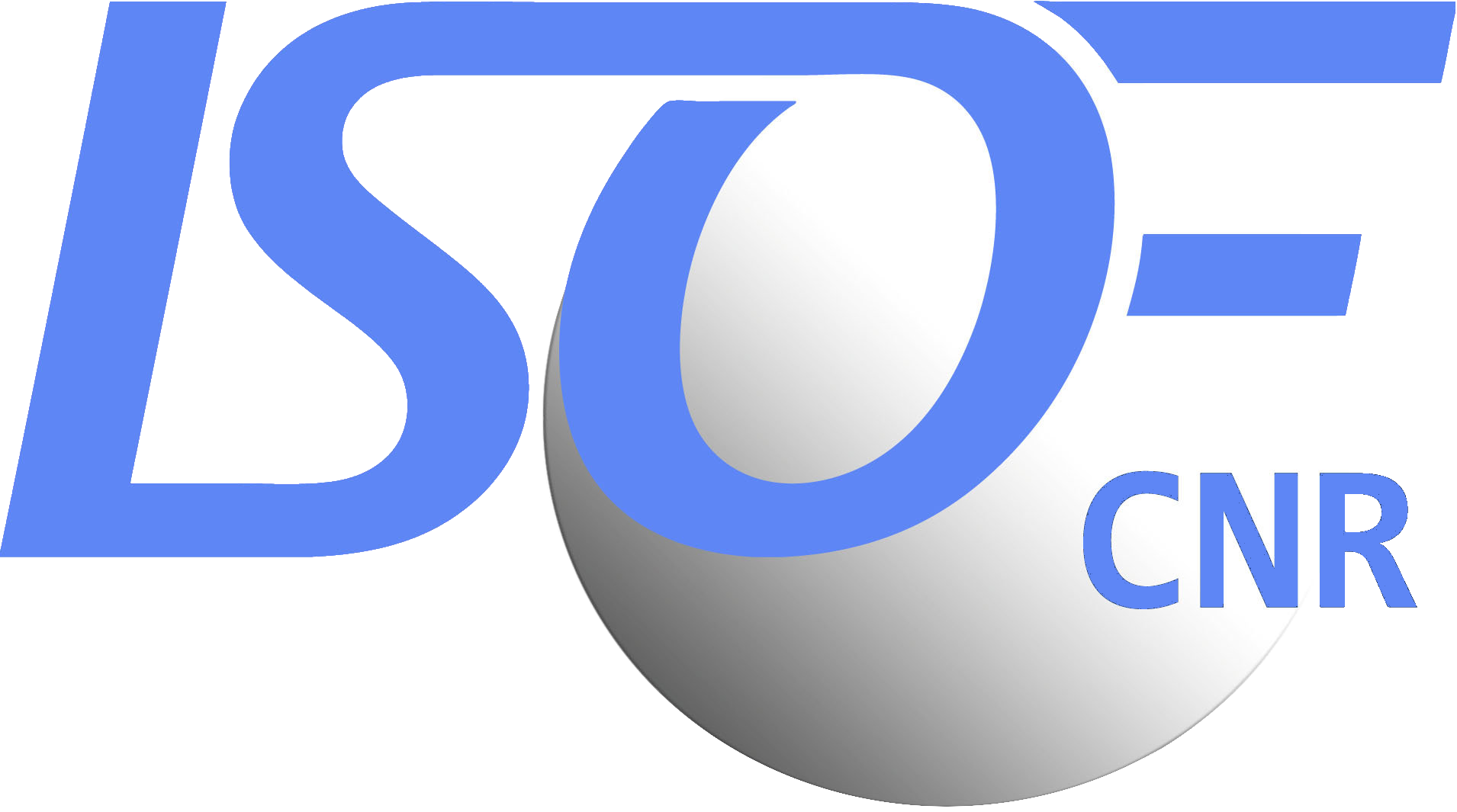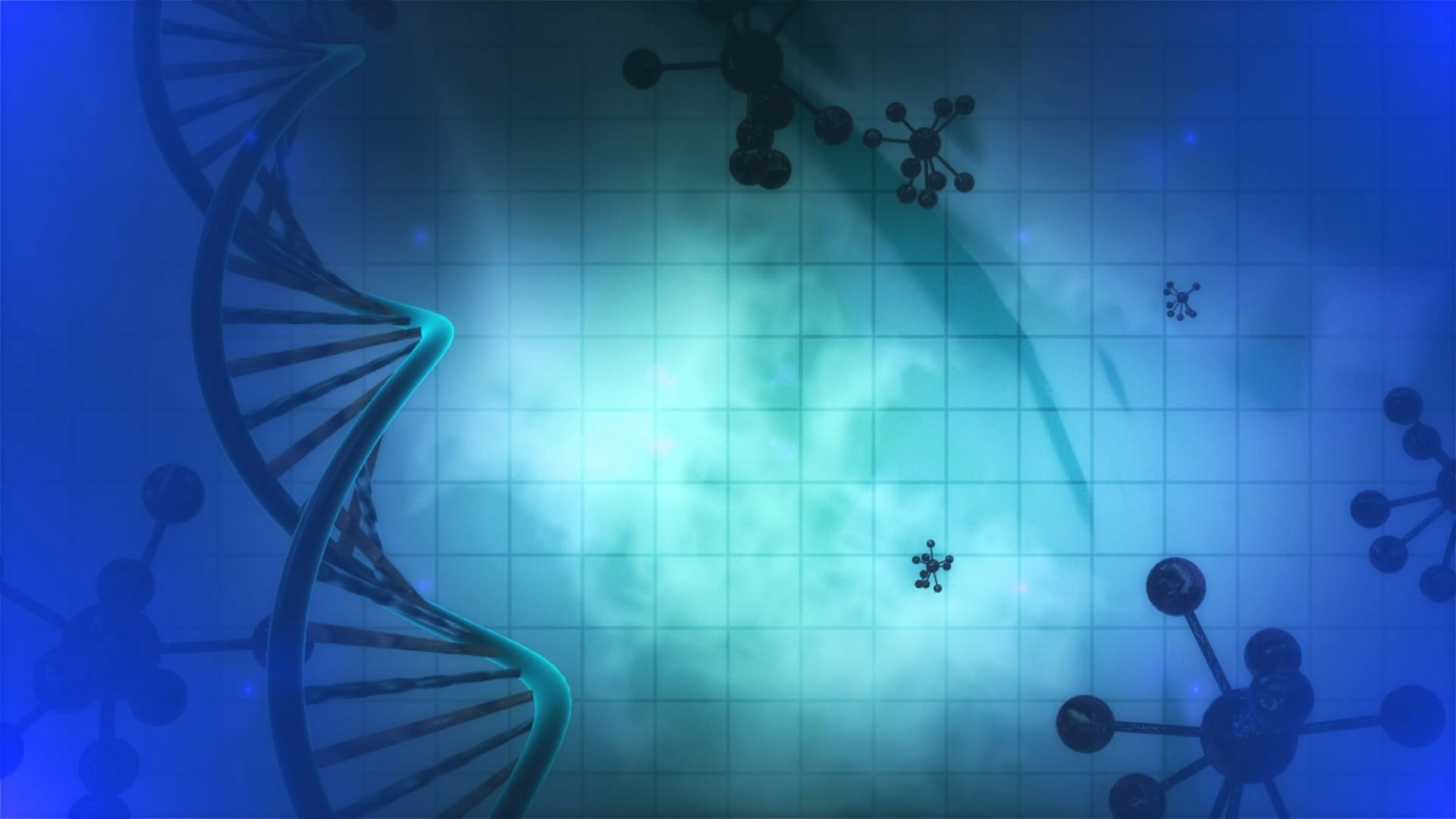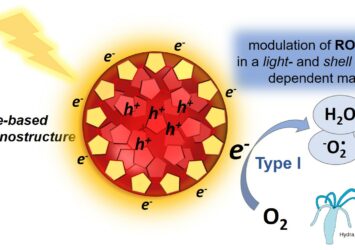
ISOF researchers, together with collaborators from IIT, CNR-ISASI, UniBO, University of Rzeszov, and University of Tel Aviv, have synthesized a new type of all-organic, thiophene-based, nanoparticles with a core@shell architecture, in which the outer shell is composed of the oxidized form of the polymer forming the inner core (namely, P3HT@PTDO NPs). Advanced characterization analysis revealed that the materials form a so-called type II interface, which is highly desirable for a variety of photonics applications but exceedingly difficult to realize with only organic components.
Using state-of-the-art spectroscopy a and microscopy tools, the researchers demonstrated that the specific nanoarchitecture leads to very peculiar photoreactivity properties. In particular, when the nanoparticles are illuminated, the outer shell becomes rich in negative electrical charges due to the induced displacement from the inner core to the shell (an effect known as charge separation), thereby making the particles more reactive to the environment.
The properties of these new nanoparticles have been exploited to demonstrate advanced applications in biomedicine. Charges that are generated during light excitation can be used for the photostimulation of retinal neurons; researchers have administered the nanoparticles to light-insensitive degenerated retina explants and observed a more efficient photostimulation effect that than the gold standard P3HT nanoparticles. At the same time, the accumulation of negative charges at the shell of the particles can enhance the generation of reactive oxygen species (ROS) when the system is illuminated: this can be exploited to tune the controlled ROS generation by changing the oxygenation degree of the shell and can find application for precise ROS optical modulation in vivo at nontoxic levels, aimed at therapeutic purposes.
Original articles:
[1] M. Zangoli, A. Cantelli, A. Candini, A. Lewinska, F. Fardella, A. Tino, G. Tommasini, M. Wnuk, M. Moschetta, S. Perotto, M. Lucarini, C. Tortiglione, G. Lanzani, F. Di Maria
Photoreactivity of Thiophene-Based Core@Shell Nanoparticles: The Effect of Photoinduced Charge Separation on In Vivo ROS Production
J. Phys. Chem. C 2023, 127, 4672−4683
[2] J. Barsotti, S. Perotto, A. Candini, E. Colombo, F. V. A. Camargo, S. Di Marco, M. Zangoli, S. Sardar, A. J. Barker, C. D’Andrea, G. Cerullo, S. Rozen, F. Benfenati, F. Di Maria, G. Lanzani
ACS Appl. Mater. Interfaces 2023, 15, 10, 13472–13483


